Depending on the species of plant that you have in your house, you may find it to be a bit more sensitive in terms of basic needs. Not every houseplant is easy to keep happy. But, what goes into ensuring that your plant will thrive?
There are a number of requirements needed by any plant to survive. These include the right nutrients, soil type, humidity, temperature, and light. In fact, one of the essential factors for their growth is how much light they get.
Choosing where to place your plant is pivotal as different sections of the house get separate amounts of light. For instance, east-facing windows are known for moderate light in the morning hours.
Plants placed near a north-facing window can expect plenty of bright, indirect sunlight. These rays also tend to happen in the morning. The difference is that north-facing windows often have softer or low-level conditions.
Now that you’re familiar with north and west-facing windows, what happens if you were to put your flora into a spot that is facing the south? Which plants thrive off of exposure to a south-facing window? Let’s first look at what this would look like.
There are few plants that can actually handle south-facing windows. But, why is that?
Well, for starters, they have much stronger light than other directions. The conditions tend to be a constant supply of direct, bright sunlight, something that most plants would find too much.
This can also depend on which hemisphere you live in. Live in the Northern Hemisphere? This full sun will happen throughout the day. If you’re in the Southern Hemisphere, it’ll be the reverse. But, what plants are able to survive such taxing conditions?
Strong, bright light is typically something that plant enthusiasts will tell you to avoid for your household flora. But don’t let that fool you! There are a number of species that actually prefer to have a full day of bright, direct sunlight.
South-facing windows get a lot of bright direct light daily. This level of light is suited for high light plants according to the University of Minnesota.
The following section includes the 13 best plants for south-facing windows.
WHICH PLANTS WORK BEST FOR SOUTH-FACING WINDOWS?
- Aloe Vera (Family: Liliaceae)
- Garden Croton (Codiaeum variegatum)
- Jade plant (Crassula ovate)
- Hibiscus (Family: Malvaceae)
- String of Pearls (Curio rowleyanus)
- Dwarf Citrus (Citrus sinensis)
- African Milk Bush (Euphorbia trigona)
- Ponytail Palm (Beaucarnea recurvate)
- Jasmine (Jasminum sp.)
- Areca Palm (Dypsis lutescens)
- Geraniums (Geranium cinereum)
- Sweet Basil (Ocimum basilicum)
- Sago Palm (Cycas revolute)
Table of Contents
13 Best Plants for South-Facing Windows
1. ALOE VERA

These succulents are a fan favorite for many reasons. They’re easy to keep alive, add a nice fragrance, and can be used for an assortment of medical uses. They sport bright green leaves that are thick, fleshy, and softly serrated.
Native to the tropical and arid regions of the Arabian Peninsula, Aloe Vera relies on light to survive! The general rule of thumb is that they need a minimum of six hours for direct light. Something also to note is that the leaves can be burned if in for direct sun for too long.
South-facing windows are ideal spots for the Aloe Vera plant. They offer plentiful amounts of direct sunlight. You may want to consider moving your flora towards the side of the window to avoid foliage damage.
Overall, these plants will not grow unless met with lots of sunlight throughout the day.
2. GARDEN CROTON

Don’t let the name deter you. Despite having “garden” in the name, they make excellent indoor plants! Also known as the Variegated Laurel, the leaves of a Garden Croton are quite exotic in their overall appearance, sporting a number of colors including red, yellow, copper, orange, pink, and yellow.
These tropical Euphorbias are happiest when given full sunshine. Surprisingly, the vibrancy of the leaves actually depends on how much light they receive in a day.
Deciding on where to put a plant that loves full sun is a no-brainer! South-facing windows are ideal for such individuals, as they will give your Garden Croton enough sunlight to hold onto that color.
Just as with Aloe Vera, they shouldn’t be placed in a spot that doesn’t allow some relief. The leaves, though resilient and waxy, can get scorched.
3. JADE PLANT

This flora goes by many names. You may have heard the Lucky plant or Money Tree. Regardless of the common name, they all resemble a petite succulent with dark green, fleshy leaves and small flowers that take on a white or pink appearance.
They can be natively found in regions of South Africa and Mozambique. Given the fact that the Jade plant is an African succulent, you may assume that they prefer lots of sun! You wouldn’t be entirely wrong.
Bright, indirect light is the optimum condition for a Jade plant. We know that this may be contradictory to the rule regarding southern-facing windows, but this setting is the best.
Jade plants are placed on the side of a window facing the southern regions of your house.
We just simply suggest that you don’t keep them there throughout the whole day if the window isn’t partially blocked since this will cause scorching of the leaves.
4. HIBISCUS
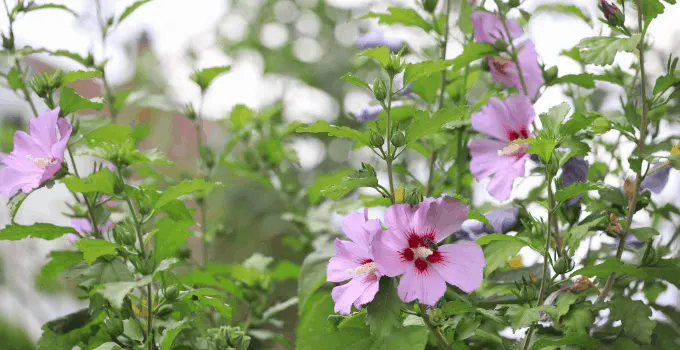
A well-known Hawaiian native, the Hibiscus is a highly coveted tropical addition. The only thing is that it can be a bit finicky in regards to indoor care.
The mallow family, also known as Malvaceae, is known for being particular with their needs. Hibiscus, in particular, will grow to be quite vibrant if provided with plenty of bright sunlight.
This may not be a shock when you consider that Hawaii tends to be a popular getaway location for its abundant sun.
Individuals raised both indoors and out in the garden still need the same sun requirements met. Hibiscus requires lots of sun! Those decadent flowers won’t bloom properly unless given at least 6to 8 hours of bright light.
And unlike other plants, direct light isn’t too bothersome. South-facing windows are ideal for such a plant! They can meet that necessity with ease.
5. STRING OF PEARLS
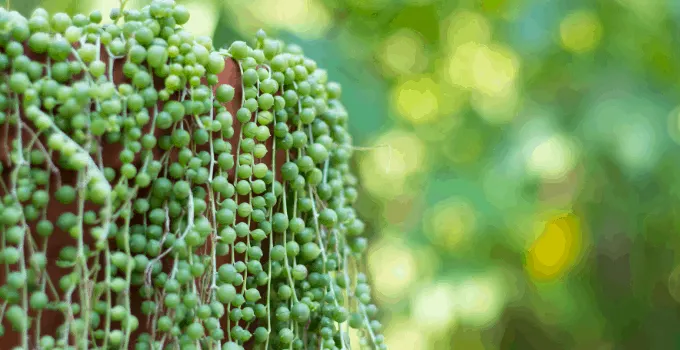
With a name like this, you may make the assumption that these plants are quite sensitive. This is far from the truth! String of Pearls, or Senecio rowleyanus is a succulent named for its spherical leaves that grow along lengthy, draped stems.
And being a succulent, they are quite hardy! When given enough light, you may be able to see their unique blooms. These resemble a conglomerate of white little flowers that have small red stamens shooting out on the outer edges.
And best yet, they smell like cinnamon!
Bright light is the favorable condition for these succulents. And although we say bright, that doesn’t mean that they also prefer direct lighting.
A spot that faces the south may be too intense at times, unless you angle your plant correctly. We’ve placed the String of Pearls plant under the category of top south-facing floras because they do better in this direction than others.
If they don’t get enough full sun, those leaves start to dwindle and die off.
6. DWARF CITRUS
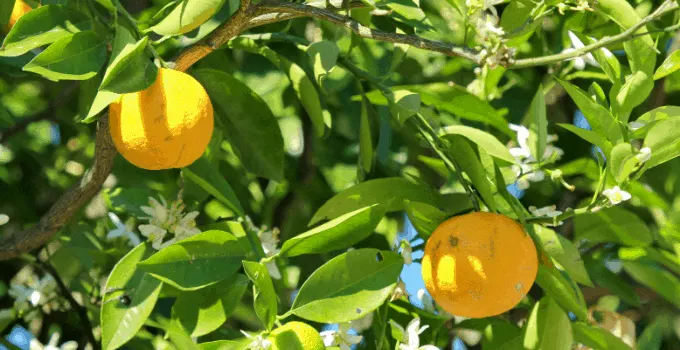
The Dwarf Citrus is a member of Rutaceae, all of which share a fragrant odor from their flowers and fruit. This plant is actually a small tree that can bear lemons, limes, or oranges depending on the subspecies.
Growing them within containers isn’t all that tricky! They are native to Asia with the subtropical and tropical areas. One can also find them within the Malay Archipelago.
They are highly coveted among fruit enthusiasts, meaning that they have been cultivated in many regions of the world.
The general census is that Dwarf Citrus trees require at least eight hours of full sun every single day. Without it, they aren’t able to produce a bountiful supply of fruit! South-facing windows are an ideal location because they meet that basic need of light.
One thing you should watch for is that these plants can become dried out. Simply keep an eye on the leaves and mist when needed.
7. AFRICAN MILK BUSH
The Spurge family, or Euphorbiaceae, make up a lot of herbs, including the African Milk Bush.
Considered to be known as an ornamental shrub by many, these individuals bloom small white or yellow flowers when provided with the right conditions.
Central African deserts tend to house these interesting succulents. This should give you an idea of how bright they prefer their environment to be!
South-facing windowsills are notorious for having plenty of light, to the point where some plants become burned.
The African Milk Bush actually prefers these conditions. They are one of those floras that need as much sun as you can provide in a day.
The minimum requirement is a half-day worth of direct, bright sunlight. Another thing to consider is that they do best when given plenty of air circulation.
8. PONYTAIL PALM
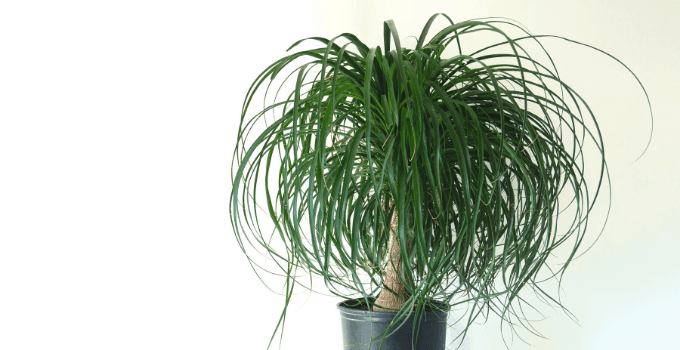
Beaucarnea recurvate, or the Ponytail Palm, is actually another tree. They are extremely easy to care for, and can go for quite a while with minimum attention.
These individuals get their name for the long, leathery leaves that shoot out from a central and thicker stem. As the name suggests, it resembles something similar to a horse’s tail!
You may be surprised to find that the Ponytail Palm is not even a true palm. They are natively found in certain areas of Mexico, where the sun bears down on all!
Growing a Ponytail Palm indoors is really easy, particularly in regards to their sun needs. They prefer lots of bright light. The shade isn’t their friend, given where they are found in the wild.
Windows that face the south are an ideal spot because they can offer this near-constant source of bright sunlight. We recommend placing your Ponytail Palm near that window instead of directly in the windowsill. This will prevent scorching.
9. JASMINE
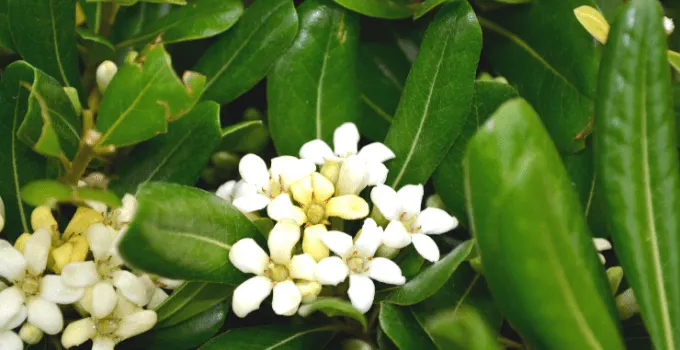
If you were to picture a Jasmine plant, would you think that it was strong and able to withstand lots of sun? Likely not. This is the opposite of what you may originally think!
Jasmine is known for producing lots of fragrant flowers. It takes quite a bit of energy to bloom such intricate flowers. These individuals are found within the tropical areas of Eurasia, Europe, Australasia, and Oceania, where there is a fair amount of sun.
Although they can survive in partial shade, the Jasmine does best when given full sun. They’re not opposed to direct sunlight. In fact, if you don’t supply them with at least six hours of full sun, they’ll start to wilt. South-facing windows make the Jasmine plant very happy!
10. ARECA PALM

Chrysalidocarpus lutescens, or the Areca Palm, is one of the most common palms that you find adorning a home. Plant enthusiasts are drawn to their feather-like fronds that branch out in a typical palm fashion. Each frond can have up to 100 leaflets, making it a fun display to have in your house.
True palms are known for thriving in areas with humid tropical forests. These regions include the Philippines, Malaysia, Southeast Asia, and India. Palms need a good amount of sun in order to live, even when raised indoors.
Some plant owners will put their Areca Palm outside where they can ample sunlight. Indoor individuals are almost always placed in a room with a south- or west-facing windowsill so that bright light can filter through. The Areca Palm is not opposed to being placed in direct sun, as long as it isn’t for too long. Fronds can be somewhat sensitive.
11. GERANIUM
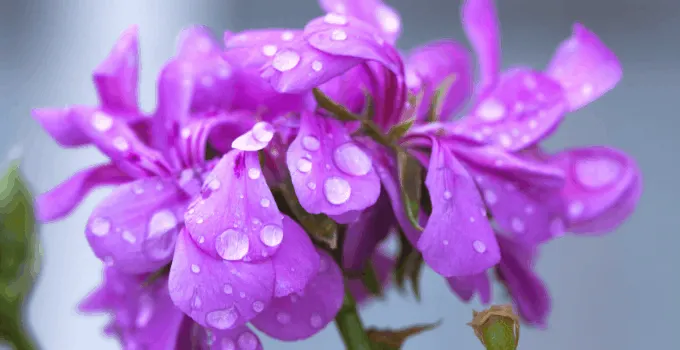
Typically found within gardens, Geranium is a fun plant to add to your indoor collection of vibrant floras. They are widely known for their large, showy flowers that range in a multitude of colors such as red, pink, yellow, purple, white, and blue.
They are southern African herbs that dominate subtropical regions. Their sun requirements are quite easy to reach, especially if you have a window that faces the southern end.
Geraniums can be placed in a spot that gets partial shade, but this shouldn’t be for too long. Full sun is their overall preference, aside from the Ivy Geranium, which actually wants light shade.
The best strategy is to find a window that is south-facing so that they can get lots of sunlight. Just remember that without it, you wouldn’t have those aromatic flowers.
12. SWEET BASIL
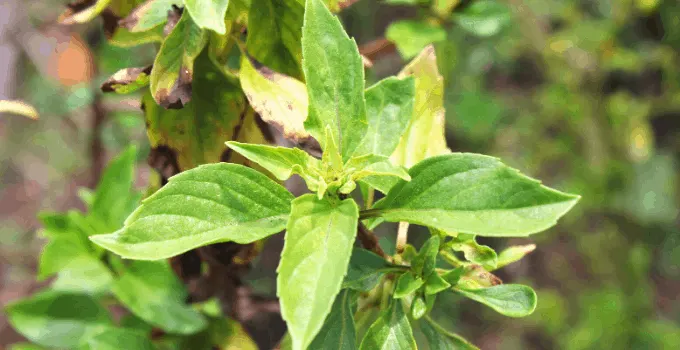
There’s no way that a small herb, such as Sweet Basil, would be able to withstand an area with lots of light, right? Wrong! Dominating most areas of India, Sweet Basil is a tropical forest inhabitant.
Most members of Lamiaceae, or the Mint family, are extremely hardy! Sweet Basil, in particular, has been cultivated for years due to its aromatic foliage. So then, how much can they really handle?
Anywhere from six to eight hours of direct light is what any Basil will need.
A south-facing window should do the trick! Did you know that you could alter the taste of your herb based on the amount of light in a day? Sweet Basil thrives in full sunlight.
This means that a lack in that production would lead to a more muted Basil plant.
13. SAGO PALM

After reading this article, you may see a pattern in which plants do best with a south-facing window.
True palms and succulents tend to make their way onto this list with ease.
The Sago Palm is no exception! This tropical inhabitant is naturally grown in parts of Southeast Asia and Oceania. Unlike the other plants on our list, they reside in swampy peat habitats.
Sago Palms can actually grow in a variety of conditions. Partially shaded spots aren’t bad in small doses.
Full sun is much better and keeps your plant happy! Although we say “full sunlight”, this does is not synonymous with direct rays. These plants can become stressed out or burnt if placed in such spots.
A windowsill that is directed towards the south gives them enough full sun to stay happy and healthy!
FREQUENTLY ASKED QUESTIONS ABOUT SOUTH-FACING WINDOW PLANTS
Is a south-facing window good for plants?
South-facing windows are known for having the most amount of light compared to the other directions. Within a few feet of the windowsill is direct sunlight, while the slightly farther out lies indirect light. Plants that need plenty of sunlight but can’t handle bright, direct light can simply have a thin piece of curtain covering the window.
What plants hate south-facing windows?
Plants that need plenty of shade won’t handle south-facing windows very well. Such species include Adiantum, Philodendron, Peace Lily, Devil’s Ivy, and the Spider plant.
Which other plants do well when placed in south-facing windows?
There are a number of plants that we could not mention. Additional individuals who thrive when placed in south-facing windows are the Weeping Fig, Jade plant, Dumb Cane, and the Garden Crotch.
Read about the best southwest-facing window plants next.

Daniel has been a plant enthusiast for over 20 years. He owns hundreds of houseplants and prepares for the chili growing seasons yearly with great anticipation. His favorite plants are plant species in the Araceae family, such as Monstera, Philodendron, and Anthurium. He also loves gardening and is growing hot peppers, tomatoes, and many more vegetables.

![The 13 Best Plants for South-Facing Windows [2024]](https://plantophiles.com/wp-content/uploads/2020/10/South-Facing-Window-Plants-480x270.png.webp)

